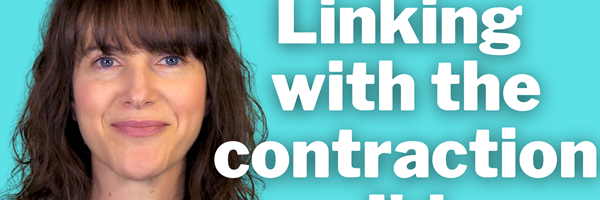(Video Transcript)
Wait...did they just say a bad word in English?
Nope, they said the word asked, which is the reduced form of asked. I’m Julie with San Diego Voice and Accent, and in this video, I’ll show you how to correctly reduce the word asked using the Rule of Three.
American English loves reductions. Why? Because reductions allow your speech to sound faster. Reductions also help with linking syllables together. And this is what spoken English is all about: short and fast syllables linking up with long and slow syllables, and this equals rhythm.
The Rule of Three
The Rule of Three describes one very powerful way that reductions occur in spoken English. If this concept is new to you, I recommend that you watch a previous video I published called The Rule of Three, in which you’ll learn the theory behind the Rule of Three and you’ll practice using it in common phrases.
But here’s a quick recap: The Rule of Three describes what happens to the T consonant in the word past in this sentence, Turn left and you will walk past the bookstore. Listen to this man as he says that sentence.
He said pass the bookstore not past. What happened to that final T consonant? According to the Rule of Three, when three or more consonants are next to each other between vowels or after a vowel, the middle consonant is often dropped. It disappears completely, especially when it’s a voiceless stop consonant like the P, T, or K consonants.
How to pronounce asked
I want to focus on how the Rule of Three applies to the word asked. I am often asked about this word - how to pronounce it, how to link it, and how to reduce it. In this video, you’ll learn all three.
First, let’s discuss how to pronounce this word according to the IPA. Here’s the IPA transcription. You’ll see four symbols, which means there are four sounds:
AAA
SSS
KKK
TTT
Asked
And if you look closer, you’ll notice that there are three consonants in a row - the S, K, and T consonants. And if we apply the Rule of Three to this word, that means the middle K consonant can be dropped.
That means, this word can also be pronounced as asst.
Asked
Asked
Asked
Both options are correct. If a native speaker is trying to speak more carefully or deliberately, or they want to stress the word asked for some reason, they might choose to use the full pronunciation, asked.
Or, if a native speaker is speaking quickly, or the word asked is unstressed in that sentence, they might choose to use the reduced form, asst.
Asked
How to pronounce I asked her
Now let’s look at the word asked in a sentence, like, I asked her, and let’s apply the Rule of Three.
I asked her.
I asked her.
But notice there’s a pronoun in this sentence, the word her.
I asked her.
And I used an intonation pattern that placed the stress on the word asked, and the pronoun her was unstressed. That means, the pronoun can also be reduced. The initial H consonant can be dropped, and her can be pronounced as er.
I asked her.
I asked her.
I agree with Youglish on this one. I think it’s much more common in typical speech for a native speaker to reduce both asked and her in the phrase, I asked her.
The same happens in a phrase like, I asked him. Both asked and him can be reduced, and once they reduce, they link up much easier than they did before.
I asked him
I asked him.
One thing to be aware of. It’s very important when applying the Rule of Three to the word asked that you always pronounce the T. Don’t drop the T. If you drop the T, you’ll end up saying ask, which is the present tense of asked.
So if you say, I ask her for, I asked her, it sounds like the present tense, and this results in a grammar error.
Rule of Three: Practice
Now let’s practice the Rule of Three using the word asked. First, I’ll say the sentence with the full pronunciation of asked. Then I’ll say it according to the Rule of Three. Pay attention to the reductions, the linking, and the rhythm.
She asked him to go.
She asked him to go
He asked if he could get a raise.
He asked if he could get a raise.
She asked them to be quiet.
She asked them to be quiet.
You asked for it.
You asked for it.
Thanks so much for watching, and good luck as you practice using the Rule of Three with the word asked. Have a great day.
And I'd love to hear from you - contact me to learn how we can work together to perfect your American English pronunciation!



